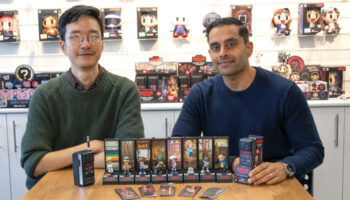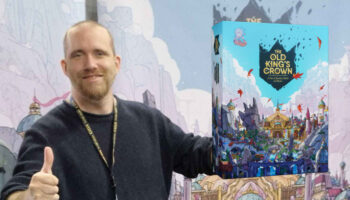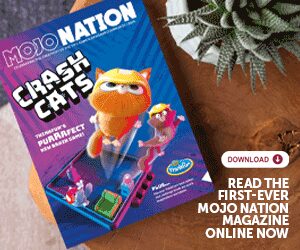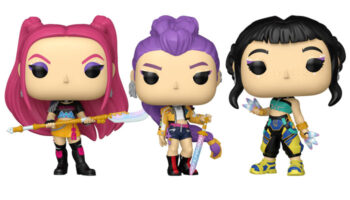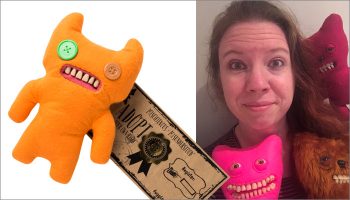Goliath’s Regan Deason on bringing The Sims into board games

Regan, it’s great to tie-in. To kick us off, for anyone that hasn’t seen your Sims game close up yet, can you talk us through how it plays? Give us the pitch!
For 25 years The Sims has brought imaginative storytelling to life. Now, you can craft real-life adventures together with friends as you encounter unexpected surprises at every turn! Set up is as easy as unfolding the three plumbob shape boards and aligning them with six venue cards on top. Each player will get a plumbob mover and a matching needs tracker. The customization and character building begins when players pick out a home and an aspiration.
One their turn players will travel to a location, manage their needs on the needs tracker, collect cards that fulfill their aspirations, and interact with the other players. If a player is lucky, they might even befriend an iconic Sim like Bella goth or Bonehilda along the way!
What is it about The Sims that makes it perfect for the tabletop treatment?
The customization, re-playability and the fanbase! Though the tabletop version does not include a vast selection of doors and windows to build a home, there are many, already built, iconic home cards to choose from, venues to visit, aspirations to fulfill and Iconic Sims to interact with. I and many of the people who worked on this game are Sims fans and we really think we made something the Sims fan and friend of a sims fan can enjoy, together!
What aspects of the brand – and the video game – were important to bring into this board game?
In the 25 years Sims has been around, there have been many changes to the graphics and style. Right now, The Sims franchise has a very vibrant style that we wanted to emulate while sprinkling in some visual and content references to the past editions.
One of the larger design hurdles was making the assets pulled from each edition cohesive. Our artist Jade Collins played with the idea of a fully illustrated version of all the characters, scenes and items featured. In the end we decided the more accurate representation of the brand is the rendered look. We felt this held true to the Sims franchise look and would be more recognizable to the players.
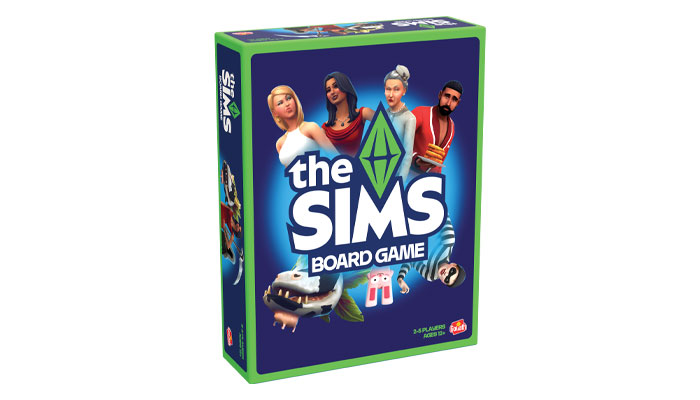
Were there any aspects that don’t work when translated into a board game? Any design challenges you were pleased to ‘crack’ when developing this game?
When trying to boil down such an expansive digital game to be a board game, we knew it would be a challenge deciding what must be included and what can be (reluctantly) omitted. We did our best to jam this game with as much Sims lore as possible.
One of the challenges we overcame was how to include interactions between players. In the Sims digital game, the active player can interact with the townies in a variety of ways. Sometimes the interactions go well and sometimes they end in a brawl. There as a lot of options to choose from and quite a few different ways the interactions could go.
We explored the option of a 12-sided die with each side representing an optional outcome of an interaction between players. In the end that was too much to manage, and players did not want to reference a booklet of emotions. We decided on a 6-sided dice, with faces that determine if an interaction was good, or bad. This left the narrative up to the players and caused more in game socializing in the end. Though the mechanic is not one for one how it works in the digital game, it still elicited the game reaction when playtested.
The Sims isn’t inherently ‘competitive’. How have you tackled this aspect of the brand, in a way that both feels authentic to the original experience and makes for an engaging board game experience?Since Sims is a single player game, there was a desire to let players focus on their experience while injecting opportunity to interact in a way that is not considered a “punch down” to one another. Players win by fulfilling aspirations and hanging out with Iconic Sims all while maintaining their needs, traveling around the board, and interacting with each other.
A large component of the digital game is maintaining your needs in order do things or go places. This mechanic translated so well to the board game. Players need to maintain their needs to travel to location, from those locations they can draw cards and potentially advance in the game. The player’s character is built as the game goes on, interests are revealed, and aspirations are fulfilled. At the end of the game, it is not the richest or the strongest, but the person who accomplished the most and or befriended the most iconic sims. Being an accomplished player could mean having a big happy family or being the chief of mischief. That is the fun part of the variety in this game.
Last question! The Sims is 25 this year. Why do you think the game – and wider band – has endured this long?
Sims brought to the people an opportunity to express, explore and expand upon the version of their lives that they might not be granted otherwise. The game is so expansive and allows for life to be lived with a creative twist. The Sims team, to me, has always portrayed a nonjudgmental, accepting and outright hilarious community. I am so fortunate to be working with them on this game. The team behind Sims are a wonderful group of people so it only makes sense that what they make is wonderful as well.
–
To stay in the loop with the latest news, interviews and features from the world of toy and game design, sign up to our weekly newsletter here


